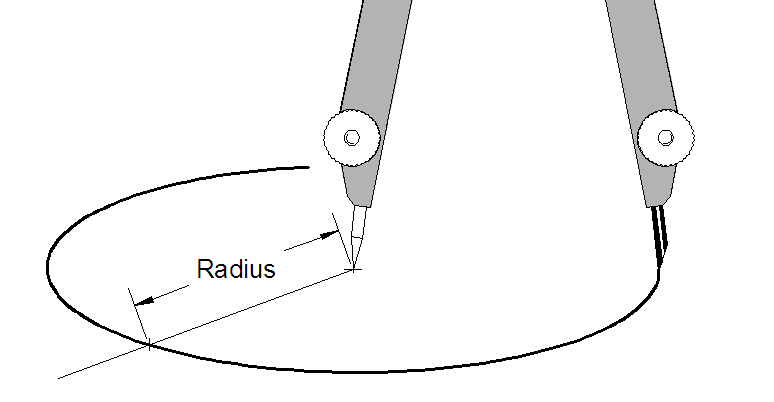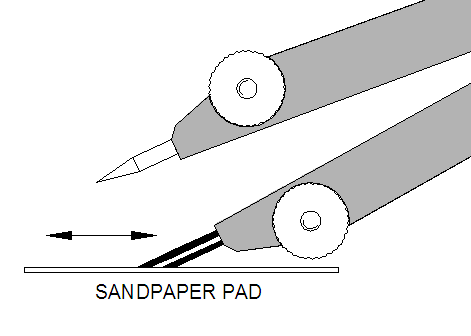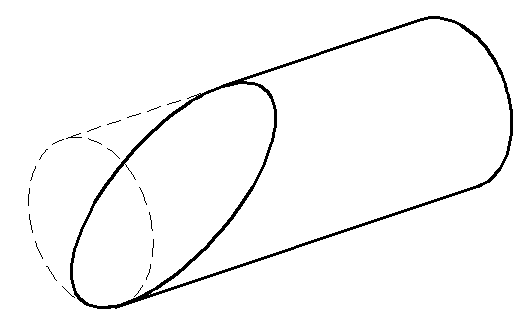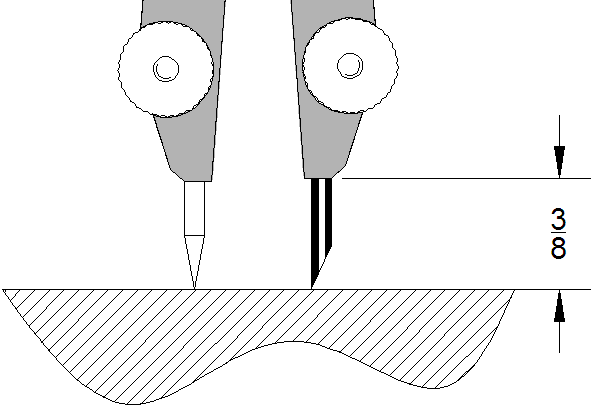Compasses are used to draw medium to large arcs and circles. Small circles are better drawn with circle templates (discussed later). Mathematically, compasses can be thought of as instruments to lay out a set of points that are a particular distance (a radius) away from a given point. This means that compasses useful for laying out distances from known points to find unknown points. Examples of this use are described in the chapter on geometric construction.

A quality compass is required to do precision work. When performing geometric constructions, it is essential that the compass remain set to an exact distance, so a compass with a positive locking feature is often helpful. As a compass pierces the paper when used, it is important to use them on a drawing surface that is designed for this purpose such as linoleum or hardwood. Be careful not to use them on surfaces that could be damaged by the point.
For a compass to make a crisp line it should be sharpened as shown in the illustration below. A piece of sandpaper is used to grind the lead to a taper. Sandpaper pads are made for this purpose. To avoid smudges, the lead and soiled sandpaper must be kept away from drawing board and other instruments. Wipe the excess graphite from the compass with a tissue before drawing with it.


It is good practice to align the point and lead ends of the compass so they are even. This will allow you to use the compass without too much difficulty. The lead and point are adjusted by loosening the knurled wheels on the side of the compass. The point and lead should extend about 3/8 of an inch beyond the instrument.

To use the compass, set the compass to the approximate radius and press the point end into your paper at the previously marked center point. Adjust the screw until the lead is properly placed. It is difficult, if not impossible to set the compass before placing it in the drawing position. Lean the compass slightly into the direction of rotation. If a thicker line is desired, slightly open or close the compass and repeat the circle.
Many compasses come packaged with an alternate tip that can replace the pencil lead. This allows the compass to function as a set of dividers.


Recent Comments